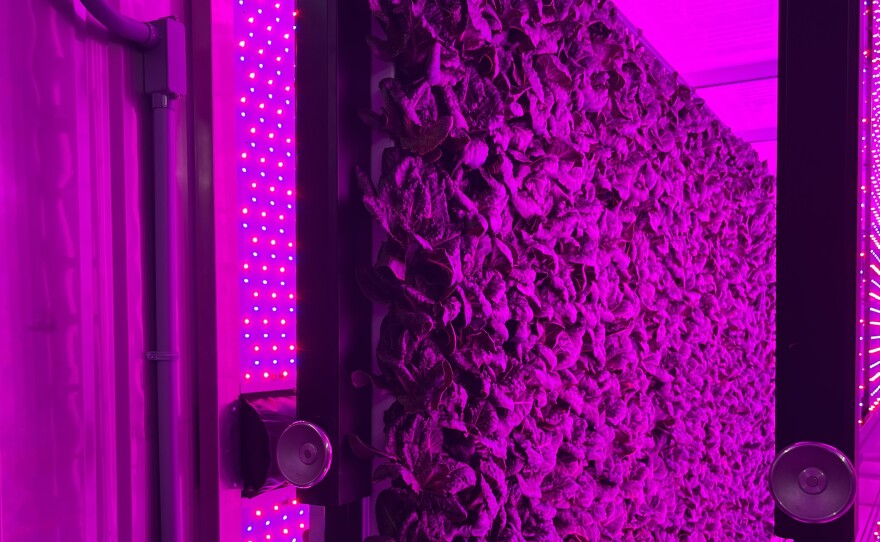Last April, the Cincinnati Zoo started growing some of the food it needs to feed its animals. Less than a mile from the elephant enclosures and manatee displays, it set up two storage containers equipped with hydroponic systems to cultivate lettuce and kale.
Since then, the zoo has grown more than 8,000 pounds of produce in Avondale — enough to supply the giraffe feeding program.
Sustainability Project Manager Megan O’Keefe says the zoo still ships food in, but growing on-site is helping it be more resilient.
“We’re dipping our toe in the water because there has been supply chain issues, especially with climate change — we're experiencing more droughts on these farms that we get our lettuce from in California, in the Southwest,” O’Keefe said.
Crops are less susceptible to disease outbreaks or drought when grown indoors.

The hydroponics system means the lettuce and kale don’t grow in soil. Instead, they get nutrients from water and light from red and blue bulbs in the storage container.
Despite the up-front costs of the high-tech farming equipment, O’Keefe says the zoo is seeing a return on investment.
“Not relying on vendor lettuce, having a constant fresh, healthy supply here at the zoo is actually proving to be fiscally beneficial for us in ways, because we don't have to stress out about that market variability,” O’Keefe said.
The zoo is considering expanding the hydroponics initiative to grow food for more animals — and maybe even people.
O’Keefe says she wants to get certifications that would allow people to eat the locally grown lettuce too, especially in Avondale, which was a .
“We would love to share this beautiful, high-quality produce with our community, whether that's through partnering with different food rescue groups or mobile markets or just partners that are working in the food security space,” O’Keefe said.
Growing on-site avoids 15 metric tons of CO2 emissions
The on-site food-growing initiative cut the zoo’s climate-warming carbon emissions last year.
Sustainability Coordinator Quincy Ipsaro says not having to ship in as much produce avoided 15 metric tons of carbon dioxide emissions.
“That's the equivalent of charging 1.7 million cell phones and also the amount of carbon that a 15-acre forest can sequester in an entire year,” Ipsaro said. “It's also the equivalent of burning about 17,000 pounds of coal.”
Read more:


